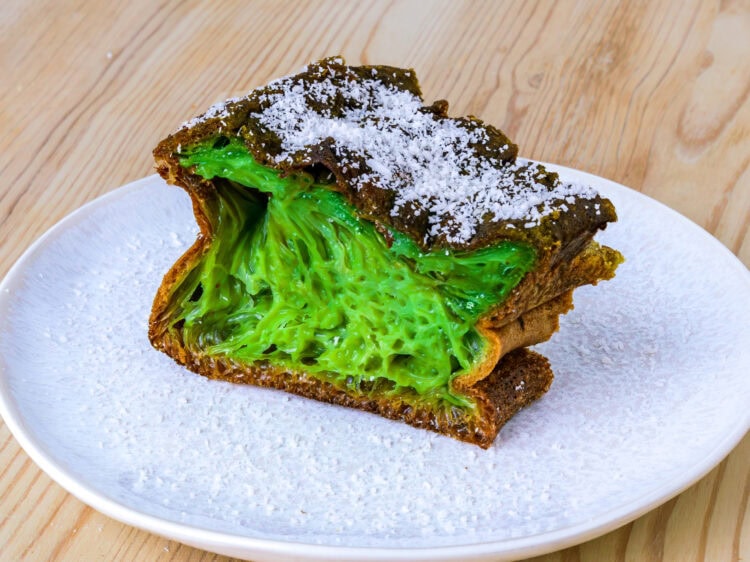A beautiful Vietnamese cake with summer colors that promises a light and sweet finish to your meal!
Coconut and pandan… It smells just like vacation! Here’s a fresh and airy dessert recipe from Vietnamese cuisine that we especially love for its light, fluffy inside and crispy outside. Honestly, between this and the banh cam, I can’t decide which one I like more.
What is Banh bo?
Banh bo is a Vietnamese dessert, a type of baked pandan cake. In Vietnamese, “Banh bo” literally means “cow cake,” simply because the inside texture of the cake resembles the lining of a cow’s stomach. Not the most appetizing image, I know…
To make it sound a bit more appealing, it’s also called “honeycomb cake” because of the holes that form inside after baking. Visually, it looks a lot like a green sponge cake, loved for its soft texture and fragrant aroma.
It’s made mainly from pandan (an edible plant with a vanilla-like flavor), eggs, coconut milk, rice flour, and tapioca starch. Sometimes it’s served with a sweet coconut milk sauce, peanuts, or toasted sesame seeds.
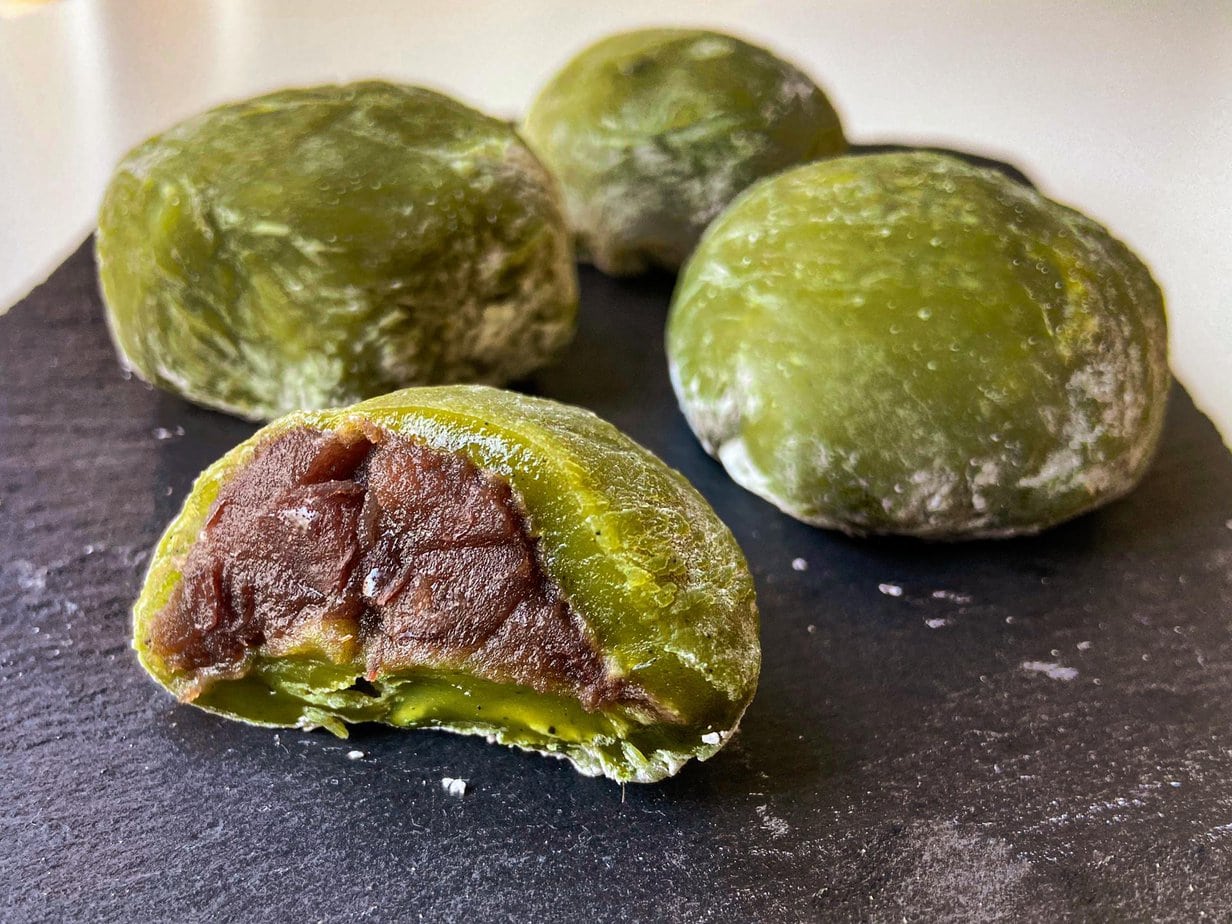
It’s a great way to play with contrasts, since Banh bo is light, soft, and airy—just what you want for those hot days that are just around the corner!
Where does Banh bo come from?
During the Chinese rule over Vietnam from 111 BC to 980 AD, the Chinese introduced what they called “white sugar cake” to their colonies. So, Banh bo actually started out as a Chinese invention!
Back then, it was called “Bai thang gao,” which literally means “white sugar cake.” It had a sweet, tangy, and even slightly sour taste, mainly because of the fermentation of some ingredients.
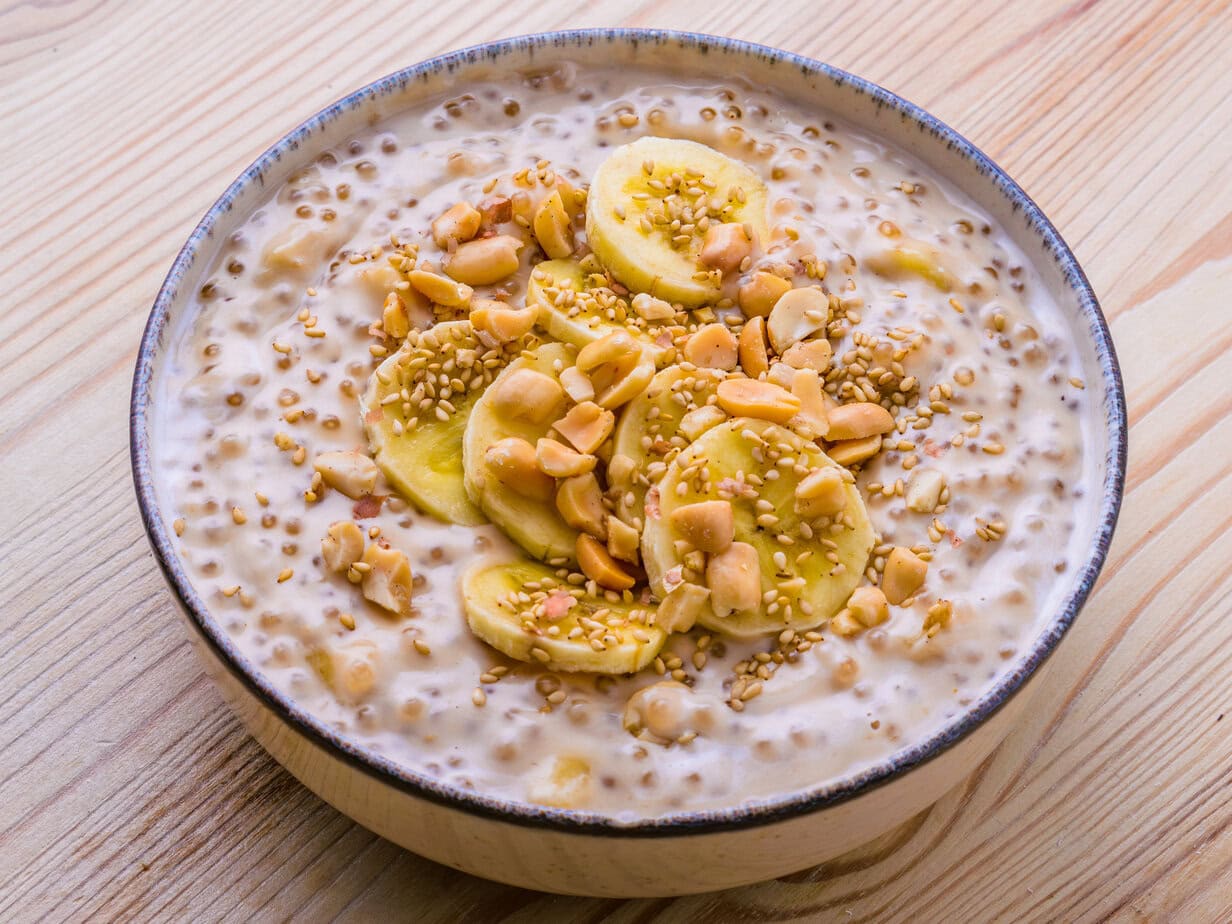
Over the years, Vietnam adapted and transformed the recipe into what we know today. The cake became spongier, softer, and more delicate.
They also ditched the white color and gave it a brighter look with pandan leaves! It’s said that the green color was chosen to help street vendors attract customers. Unusual, yes, but it definitely works!
Main ingredients in Banh bo
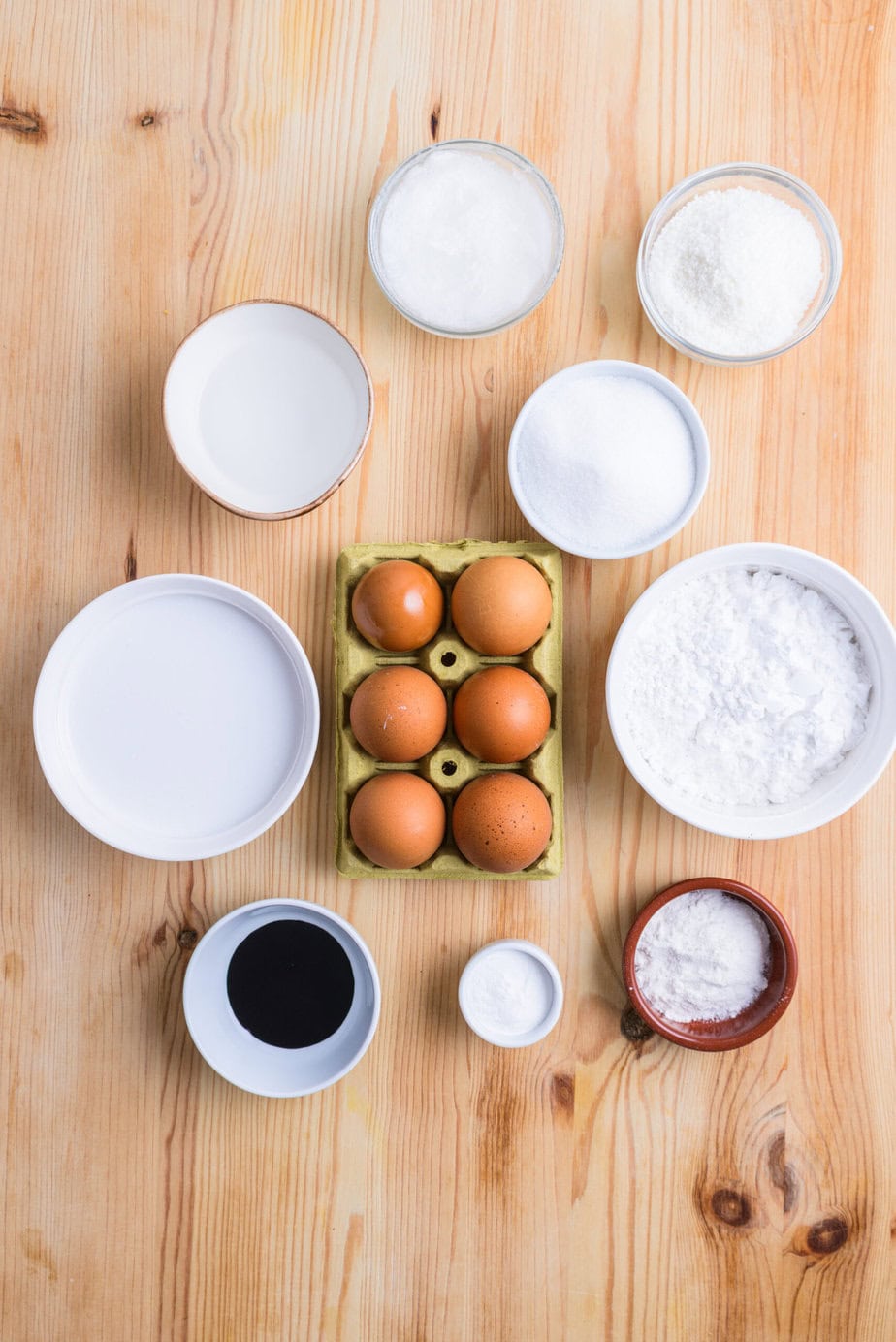
Pandan extract: Known as “Asia’s vanilla,” this aromatic ingredient is at the heart of the dish. Still, it’s subtle and not overpowering. Pandan extract is essential for both the flavor and the cake’s signature color.
Coconut milk: Creamy and smooth, coconut milk (make sure it’s unsweetened!) gives the batter a rich, velvety taste and that coconut flavor that makes you think of vacations. It’s a little escape, even in your own kitchen!
Tapioca starch: Made from cassava, tapioca starch is what creates the honeycomb texture as the cake bakes!
Rice flour: The all-purpose flour of Asia, it gives the cake structure and helps it keep its shape. Be sure to use regular rice flour, not glutinous rice flour—or you’ll be in for a surprise!
Eggs: Eggs simply bind the ingredients together and give Banh bo its structure and stability.
Sugar: Since coconut milk isn’t sweetened, adding sugar is a must. It makes the cake even softer and more delicious.
Tips for perfect Banh bo
The tricky part with this recipe is that the cake can collapse. You bake it to get that honeycomb pattern, but that’s where it often gets tricky… To achieve the signature holes, I recommend beating the eggs just lightly with a fork—don’t overmix. That’s the key.
One secret to honeycomb cake is to avoid incorporating air into the batter. You actually want a dense batter—the baking powder will do its job to create the signature lines in the cake. If you whisk the batter like you would for other cakes, it’ll be too thin and unstable to hold the air pockets, and it’ll collapse as it cools after rising in the oven.
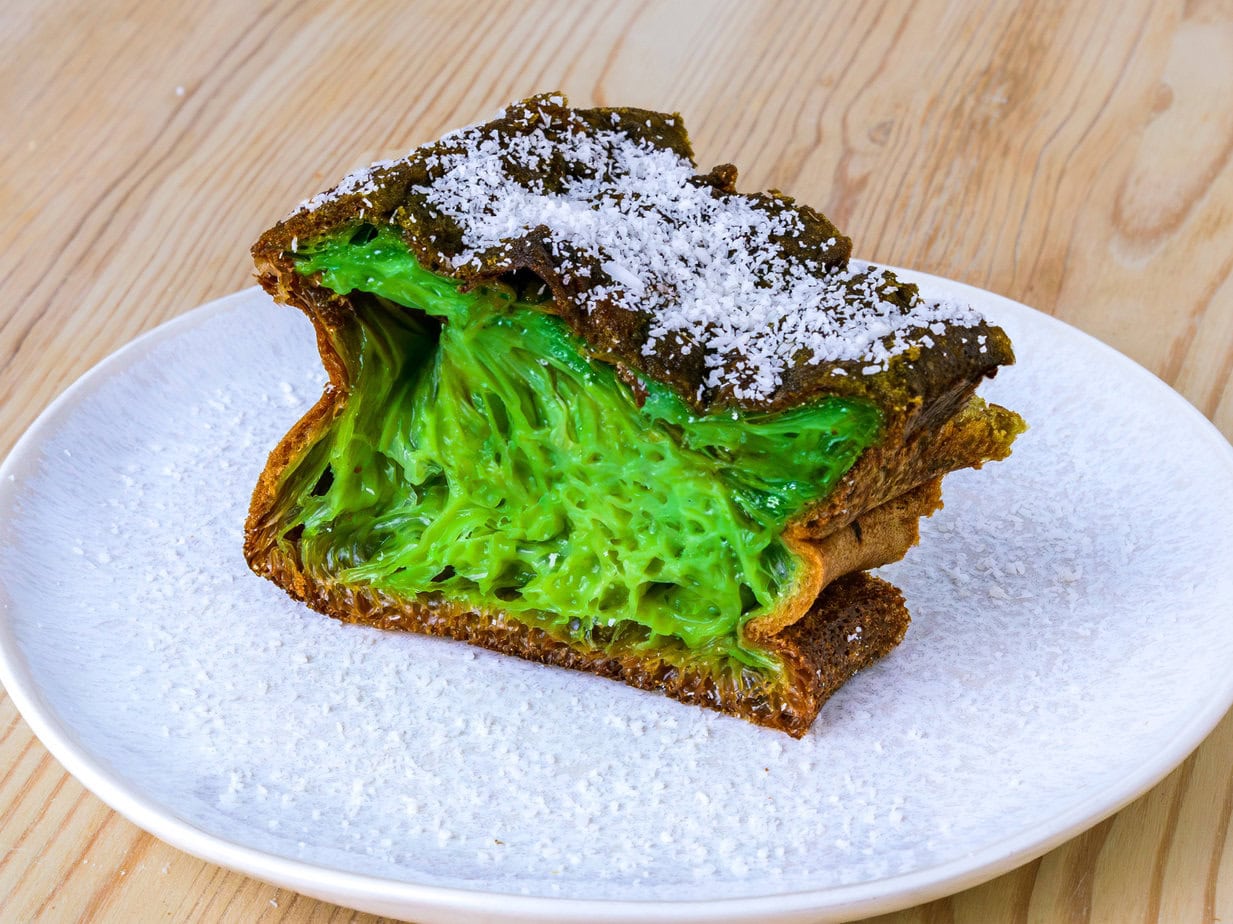
Equipment
- Moule à savarin
Ingredients
- 250 ml coconut milk unsweetened and full-fat
- 2 teaspoons pandan extract
- 6 eggs
- 3 tablespoons coconut oil
- 160 g tapioca starch
- 1 tablespoon rice flour
- 100 g sugar
- 2.5 teaspoons baking powder
- oil for greasing the pan
- 1 handful grated coconut for garnish
- 80 ml water
Instructions
- Preheat the oven to 180°C.
- In a mixing bowl, crack the eggs and beat them lightly with a fork, without overmixing, to preserve the cake’s honeycomb texture.6 eggs
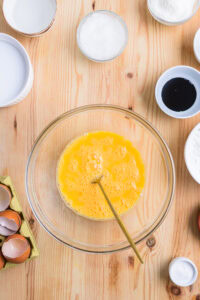
- Add the coconut oil, water, coconut milk, and pandan extract, then mix.250 ml coconut milk, 2 teaspoons pandan extract, 3 tablespoons coconut oil, 80 ml water
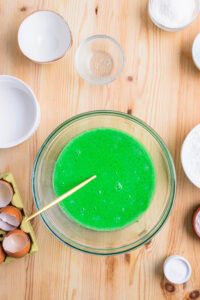
- In a separate bowl, mix all the dry ingredients.160 g tapioca starch, 1 tablespoon rice flour, 100 g sugar, 2.5 teaspoons baking powder
- Incorporate the dry ingredients into the egg mixture, stirring slowly until everything is well combined.
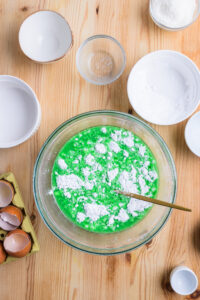
- Grease a savarin mold with a little oil and pour in the batter.oil for greasing the pan
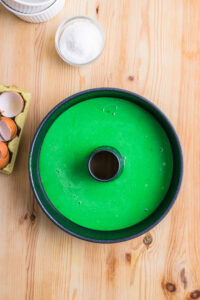
- Bake for 50–55 minutes. Turn off the oven and leave the cake in the oven with the door slightly ajar for 20 minutes.
- Remove the cake from the mold, let it cool, then sprinkle with the grated coconut before serving.1 handful grated coconut
